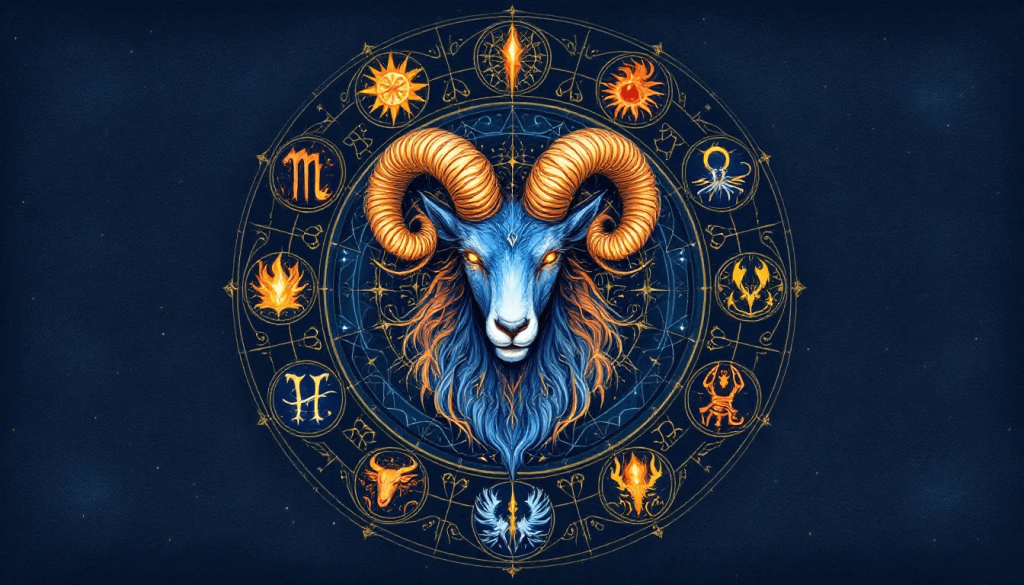- Key Takeaways
- The Astronomical Zodiac Explained
- Earth's Orbit and the Zodiac Signs
- The Role of the Ecliptic Plane
- Modern Constellations vs. Astrological Signs
- Zodiac Constellations and Their Dates
- How Precession Affects Zodiac Signs
- Understanding the Four Elements
- Zodiac Signs and Their Personality Traits
- Zodiac Compatibility
- Rising Sign and Its Importance
- Chinese Zodiac vs. Western Zodiac
- Creating Your Birth Chart
- Summary
- Frequently Asked Questions
The astronomical zodiac is a system based on the positions of stars and planets. Unlike the astrological zodiac which deals with horoscopes and personality, it focuses on real celestial events. This article explores its history, structure, and difference from astrology.
Key Takeaways
The zodiac system, rooted in ancient Babylon, divides the ecliptic into twelve sectors corresponding to distinct personality traits associated with astrological signs.
Due to Earth’s precession, the timing of zodiac signs now shifts about one month later than their original alignment with the constellations, affecting how astrology is interpreted today.
Zodiac signs are linked to four elements—Earth, Air, Fire, and Water—affecting personality traits and compatibility in relationships.
The Astronomical Zodiac Explained

Dating back to ancient Babylon around 5000 BC, the zodiac system is among the oldest celestial coordinate frameworks. The Babylonians’ keen night sky observations laid the foundation for modern astrology. Over 2,000 years ago, the astrological signs were developed, aligning with the constellations’ positions of that era.
The zodiac is a belt-like region stretching about 8° north and south of the ecliptic, the Sun’s apparent yearly path. This area, where the Sun, Moon, and planets move, is vital for astrological interpretations. The term ‘ecliptic’ relates to solar and lunar eclipses, happening when the Sun, Moon, and Earth align along this plane.
Babylonians structured the zodiac by dividing the ecliptic into twelve equal sectors, each linked to specific constellations. These sectors, known as the twelve zodiac signs, originally aligned with the constellations’ positions over 2,000 years ago. This historical alignment forms the basis of Western astrology, a tradition influenced by both Babylonian and Hellenistic cultures.
Earth’s Orbit and the Zodiac Signs
The zodiac signs’ positions are intrinsically tied to Earth’s orbit around the Sun. As Earth completes its 360-degree annual orbit, it forms twelve 30-degree sectors defining the astrological signs. This movement makes the Sun appear to traverse the zodiac constellations, a core aspect of astrology.
Specific date ranges during the year link to each zodiac sign, determining one’s sign based on their birth date. Due to the precession effect—Earth’s axis gradually wobbling over approximately 26,000 years—astrological signs now occur about one month later than when the zodiac sign occurs initially established.
This drift highlights the dynamic nature of our celestial framework and its influence on zodiac interpretations.
The Role of the Ecliptic Plane
Visualize the ecliptic plane as an invisible sky highway, extending Earth’s orbital plane outward. This plane is essential as it delineates the zodiac—a narrow band around the Sun’s ecliptic path, extending a few degrees above and below. The ecliptic plane, the Sun’s apparent path as Earth orbits, hosts the zodiac constellations.
Precession, the slow shift in Earth’s axial tilt, significantly impacts astrology by causing zodiac signs to drift over time. This axial wobble alters the timing of the Sun entering each astrological sign, complicating the relationship between zodiac signs and their corresponding constellations.
Modern Constellations vs. Astrological Signs
Astrological signs are twelve equal 30-degree sections along the ecliptic, while modern constellations are specific sky areas with defined boundaries set by astronomers. Constellations remain fixed, whereas astrological signs hinge on the Sun’s apparent path and celestial bodies’ positions within these regions.
Interestingly, thirteen constellations lie along the sun’s path, yet the traditional zodiac includes only twelve. This gap exists because astrological signs focus on symbolic representation and personality traits rather than exact astronomical positioning.
The International Astronomical Union defines astronomical constellations as fixed sky areas, which don’t perfectly match astrological signs.
Zodiac Constellations and Their Dates
The twelve zodiac constellations each correspond to a specific period in the year, marking the sun’s journey through these regions. Here is a look at the zodiac signs and their dates, along with the sign of the zodiac for each:
Aries (March 21 – April 19): Known for their competitive and courageous nature, Aries individuals are natural leaders.
Taurus (April 20 – May 20): Taurus is characterized by practicality, stability, and a love for serene environments.
Gemini (May 21 – June 21): Geminis are spontaneous, curious, and playful, often known for their adaptability.
Cancer (June 22 – July 22): Representing emotional depth and a protective nature, Cancer is symbolized by the crab.
Leo (July 23 – August 22): Leos are known for their confidence, charisma, and passion, symbolized by the lion.
Virgo (August 23 – September 22): Virgos are known for their analytical, practical, and meticulous nature, often striving for excellence in every detail.
Libra (September 23 – October 23): Libras seek balance, harmony, and justice, symbolized by the scales.
Scorpio (October 24 – November 21): Scorpios are mysterious, passionate, and determined, often associated with emotional intensity.
Sagittarius (November 22 – December 21): Adventurous and knowledge-seeking, Sagittarians are represented by the archer.
Capricorn (December 22 – January 19): Capricorns are ambitious, practical, and focused, often symbolized by the sea goat.
Aquarius (January 20 – February 18): Known for their innovative and clever nature, Aquarians are symbolized by the Water Bearer.
Pisces (February 19 – March 20): Pisces individuals are intuitive, empathetic, and sensitive, often symbolized by two fish.
These date ranges indicate when the sun appears in each constellation, shaping the personality traits linked to each sun sign and zodiac sign.
How Precession Affects Zodiac Signs
Precession, a gradual wobble of Earth’s axis taking about 26,000 years to complete, significantly affects our understanding of zodiac signs by shifting their alignment with corresponding constellations.
This shift causes the timing of the sun entering an astrological sign to misalign with when it enters the corresponding constellation. Consequently, astrological signs now appear about one month later than when first established, with this misalignment expected to increase over time.
Understanding the Four Elements
Zodiac signs are categorized into four elements—Earth, Air, Fire, and Water—each imparting distinct qualities to individuals born under those signs. These elements shape motivations, behaviors, and approaches to life, creating a comprehensive whole that connects personal traits to celestial influences.
Fire sign: Represented by Aries, Leo, and Sagittarius, fire signs are associated with passion, energy, and enthusiasm. They are typically adventurous and vibrant, finding harmony with fellow fire signs and air signs.
Earth Sign: Including Taurus, Virgo, and Capricorn, earth signs are characterized by practicality and stability. These signs tend to be reliable and grounded, often pairing well with water signs.
Air Signs: Gemini, Libra, and Aquarius make up the air signs, known for their social interactions and intellectual pursuits. They excel in communication and often find compatibility with fire signs.
Water Signs: Cancer, Scorpio, and Pisces are the water signs, linked to emotional depth and intuitive qualities. These signs are empathetic and often pair well with earth signs.
These elemental influences offer deeper insights into the personality traits and compatibility of various zodiac signs.
Zodiac Signs and Their Personality Traits
Zodiac signs provide insight into personality traits and relational dynamics. Each of the twelve signs has unique attributes shaping individuals’ behaviors and characteristics:
Aries: Competitive, courageous, and strong-willed, Aries individuals are natural leaders with a fearless approach to life.
Taurus: Known for enjoying relaxing, serene environments, Taurus individuals are practical, reliable, and grounded.
Gemini: Spontaneous and curious, Geminis are playful and adaptable, often thriving in dynamic environments.
Cancer: Compassionate and sentimental, Cancer individuals are protective and emotionally intuitive.
Leo: With their confidence and charisma, Leos are passionate and loyal, often taking center stage in social settings.
Virgo: Analytical and detail-oriented, Virgos strive for perfection and are known for their practicality.
Libra: Seeking balance and harmony, Libras are diplomatic and justice-oriented, symbolized by the scales.
Scorpio: Determined and passionate, Scorpios are mysterious and emotionally intense, often driven by deep emotional energy.
Sagittarius: Adventurous and knowledge-seeking, Sagittarians have a quest for growth and exploration, symbolized by the archer.
Capricorn: Ambitious and practical, Capricorns are focused and determined, often driven by their goals.
Aquarius: Innovative and clever, Aquarians are known for their originality and intellectual pursuits, symbolized by the Water Bearer.
Pisces: Intuitive, sensitive, and empathetic, Pisces individuals are often deeply connected to their emotions and the emotions of others.
These traits offer a deeper understanding of how zodiac signs affect individual behaviors and interactions.
Zodiac Compatibility
Zodiac compatibility unveils how different signs complement or challenge each other in relationships. Air signs, such as Gemini and Libra, and fire signs, such as Aries and Leo, are highly compatible due to their dynamic and energetic nature.
The elemental traits play a significant role in compatibility. Fire and air signs often find harmony together, while earth and water signs also share strong compatibility due to their grounded and intuitive qualities. Grasping these interactions aids in navigating relationships and fostering deeper connections.
Rising Sign and Its Importance
The rising sign, or ascendant, is crucial in astrology. It marks the zodiac sign on the horizon at birth, significantly influencing self-image and outer personality. The birth sign also plays a vital role in shaping an individual’s astrological profile, including their star sign.
The rising sign acts as a mask to the world, showing how individuals present themselves and approach new experiences. Exact birth time is crucial for accurate rising sign determination due to the horizon’s rapid position change.
This sign lays out the entire birth chart, marking the first house’s start.
Chinese Zodiac vs. Western Zodiac
Both the Chinese and Western zodiac systems provide unique perspectives on personality and compatibility. The Western zodiac categorizes signs by months with twelve constellations visible year-round, while the Chinese zodiac categorizes signs by years, based on a legendary race of twelve animals.
In the Chinese zodiac, individuals born in the same year share common traits, unlike the Western system, which assigns traits based on monthly birth periods. Additionally, the Chinese zodiac emphasizes the lunar phase of birth, while the Western zodiac focuses on sign qualities. This distinction highlights the cultural richness and diversity in star interpretation.
Creating Your Birth Chart
Creating a astro birth chart unlocks a personal celestial map. You need your birth date, exact time, and location, which can be entered into various free online tools. This data determines the positions of the sun, moon, and planets at your birth.
Each of the twelve houses in a birth chart represents different life facets, like relationships, careers, and personal values. The ascendant, or rising sign, is vital as it sets the layout of the entire astrological chart, marking the first house’s start.
A birth chart offers deeper insights into your personality and life path.
Summary
Throughout our journey through the astronomical zodiac, we’ve uncovered the rich history and scientific underpinnings of the zodiac signs. From the ancient Babylonians’ celestial observations to the modern interpretations of astrological signs and constellations, the zodiac continues to intrigue and guide us.
Whether you seek to understand personality traits, explore compatibility, or delve into the unique influences of the rising sign, the zodiac offers a fascinating lens through which to view ourselves and our relationships. Embrace the insights from your birth chart and let the stars illuminate your path.
Frequently Asked Questions
What is astronomy zodiac?
The astronomy zodiac is a set of constellations that the Sun appears to pass through as it travels along its yearly path, known as the ecliptic. These constellations form the zodiac and are used in astrology to define zodiac signs.
What is the difference between astrological and astronomical zodiac signs?
The main difference is that astronomy is a scientific study of celestial objects and their properties, while astrology is a belief system that suggests these celestial positions influence human behavior and events. Simply put, astronomy relies on evidence, and astrology does not.
How are zodiac signs determined?
Zodiac signs are based on where the sun was in relation to the twelve sectors of Earth’s orbit when you were born. So, your sign reflects that specific position!
What is the difference between astrological signs and constellations?
Astrological signs are specific 30-degree segments of the ecliptic that we use in horoscopes, while constellations are the actual patterns of stars in the sky. So, while they may overlap, they serve different purposes!
How does precession affect zodiac signs?
Precession causes the zodiac signs to shift, meaning they no longer align perfectly with their constellations. This gradual wobble in Earth’s axis affects how we understand astrological signs today.


